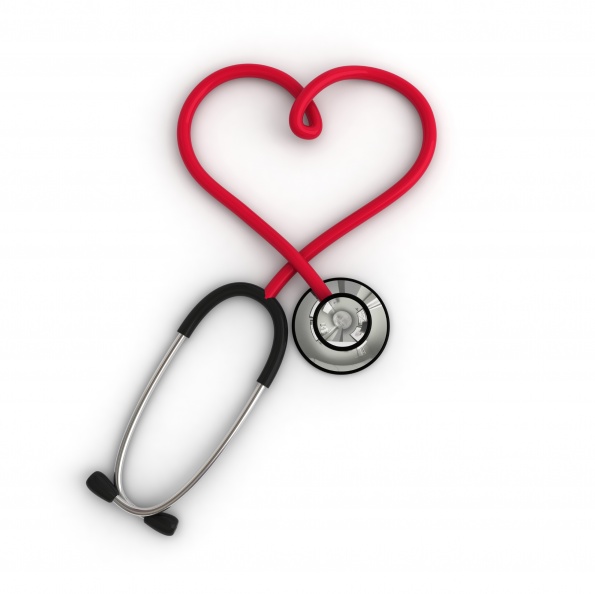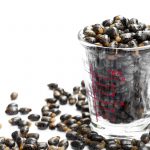Follow Your Heart: How the Heart Determines Thought and Emotion
Anne Mitchell, ND
Your work is to discover your world and then with all your heart give yourself to it.
-Buddha
 Anahata chakra, the heart chakra, symbolizes the consciousness of universal love, selflessness, and devotion. The heart, the fourth energy center, inspires the human to love—to be empathetic, devoted, and altruistic—and to accept all things that happen with compassion. Ultimately, the heart opens to experience the unity of I and thou. Holistic medicine has long taught that the heart is as important as the brain in determining our feelings and thoughts. Recent research is finally beginning to prove this connection. One of the primary researchers in this field is Rollin McCraty, PhD, director of research at the Institute of HeartMath in Boulder Creek, California. McCraty’s work at the institute suggests that the heart’s electromagnetic field is an important carrier of information. The heart’s field is the most powerful electromagnetic field produced by the human body. It can be measured several feet away from the body by sensitive magnetometers. “We propose,” says McCraty, “that the electromagnetic fields produced by the heart form a complex energetic network that connects the electromagnetic fields of the rest of the body. In doing so, the heart’s energetic field acts as a modulated carrier wave that encodes and communicates information throughout the entire body, from the systemic to the cellular levels, and even conveys information outside the body between individuals.”1
Anahata chakra, the heart chakra, symbolizes the consciousness of universal love, selflessness, and devotion. The heart, the fourth energy center, inspires the human to love—to be empathetic, devoted, and altruistic—and to accept all things that happen with compassion. Ultimately, the heart opens to experience the unity of I and thou. Holistic medicine has long taught that the heart is as important as the brain in determining our feelings and thoughts. Recent research is finally beginning to prove this connection. One of the primary researchers in this field is Rollin McCraty, PhD, director of research at the Institute of HeartMath in Boulder Creek, California. McCraty’s work at the institute suggests that the heart’s electromagnetic field is an important carrier of information. The heart’s field is the most powerful electromagnetic field produced by the human body. It can be measured several feet away from the body by sensitive magnetometers. “We propose,” says McCraty, “that the electromagnetic fields produced by the heart form a complex energetic network that connects the electromagnetic fields of the rest of the body. In doing so, the heart’s energetic field acts as a modulated carrier wave that encodes and communicates information throughout the entire body, from the systemic to the cellular levels, and even conveys information outside the body between individuals.”1
Neurocardiologists have discovered that 60% to 65% of the cells in the heart are neural cells identical to the cells in the brain. The heart gets a critical influx of cells from the neural crest as the embryonic head bows over the cardiac mesenchymal mesoderm, the heart already developing at 24 days. The heart produces and responds to many of the brain neurotransmitters. Scientists say that the heart-brain, containing more than 40 000 neurons, gives the heart the ability to independently sense, process information, and make decisions and even to demonstrate a type of learning and memory. You might have had the experience of knowing in your heart what your brain cannot know.
Joseph Chilton Pearce explains this new perspective in a 1999 Interview. He says:The idea that we can think with our hearts is no longer just a metaphor, but is, in fact, a very real phenomenon. We now know this because the combined research of two or three fields is proving that the heart is the major center of intelligence in human beings.… Quite literally, there is a “brain” in the heart, whose ganglia are linked to every major organ in the body, to the entire muscle spindle system that uniquely enables humans to express their emotions. About half of the heart’s neural cells are involved in translating information sent to it from all over the body so that it can keep the body working as one harmonious whole. And the other half make up a very large, unmediated neural connection with the emotional brain in our head and carry on a twenty-four-hour-a-day dialogue between the heart and the brain that we are not even aware of.2
The heart is also an endocrine organ and produces oxytocin, the love or bonding hormone. If you have held your newborn child, then you know what oxytocin does. Your heart could burst with love. The heart also releases a major peptide hormone, atrial natriuretic factor (ANF), which affects the limbic system, including the hippocampal area where memory and learning take place. Produced in the atrium of the heart, ANF triggers the production of urine and the excretion of sodium. It takes pressure off the heart by lowering the blood pressure. Several quantum leaps beyond suggest that loving connection, calm acceptance, and being in the moment nurture intelligence, creativity, and health.
David L. Vesely, MD, PhD, cancer researcher at James A. Haley Veterans’ Hospital, Tampa, Florida, discovered 3 more hormones that are produced from the same gene as ANF. These are long-acting natriuretic peptide (which also stimulates urine production and sodium excretion), vessel dilator (which opens the blood vessels and lowers blood pressure), and kaliuretic peptide (which increases potassium excretion).
Using colon, ovarian, breast, prostate, and pancreatic cancer cells, among others, Vesely found that the cardiac hormones kill up to 97% of all cancers in cell cultures within 24 hours. He performed trials with mice, injecting some with human pancreatic cancer cells and others with breast cancer cells. Once the mice developed tumors, he treated them with the hormones. At the end of 1 month, the treatment had eliminated cancer in 80% of the mice injected with human pancreatic cancer cells and in 66% of the mice injected with breast cancer cells.3
The University of South Florida College of Medicine, Tampa, is evaluating paths leading to Food and Drug Association–approved human trials of the use of cardiac hormones to treat cancer.
A calm heart may indeed be the cure for many diseases. Cardiac dysfunction ranges from being hard hearted (plaque) to being overwhelmed (arrhythmia) to the most obvious of being pressured. Oh, that the body was so literal! Many cardiac studies have proven that stress affects the heart. A calm heart will release the tiny amount of hormone required to keep the heart at a steady relaxed beat, bringing life to the whole body. An open loving heart will drum a beat, vibration, or resonance, directing a steady wavelength through the tissues strong enough to be measurable a few feet from the body.
If this is true—my experience (and likely yours) of a feeling of harmony with others supports the concept that we are connected—then an open heart reaches out and encourages a calm heart in others. Barbara Brennan4 describes the individual with an open heart as considerate and sensitive to the needs of others and as empathetic to their pain. Such persons are able to feel love for all beings around them in an ever-widening circle of self and family, pets, friends, neighbors, countrymen, fellow humans, and all living organisms on Earth. I believe that this is the definition of universal love.
HeartMath5 gives us the following 3-step quick coherence technique to support us on the path of the heart. It reminds us to listen to the intelligence of the heart, the rhythm of life, and the harmony of love. Feeling the coherence of the heart’s rhythm releases stress and balances emotions, facilitating your focus and creativity.
Step 1. Heart Focus. Focus your attention on the area around your heart, the area in the center of your chest. If you prefer, place your hand over the center of your chest to help keep your attention in the heart area the first couple of times you try it.
Step 2. Heart Breathing. Breathe deeply but normally and feel as if your breath is coming in and going out through your heart area. As you inhale, feel as if your breath is flowing in through the heart; as you exhale, feel as if it is leaving through this area. Breathe slowly and casually, a little deeper than normally. Continue breathing with ease until you find a natural inner rhythm that feels good to you.
Step 3. Heart Feeling. As you maintain your heart focus and heart breathing, activate a positive feeling. Recall a positive feeling, a time when you felt good inside, and try to reexperience the feeling. One of the easiest ways to generate a positive heart-based feeling is to remember a special place you have been to or the love you feel for a close friend, family member, or treasured pet. This is the most important step.
You can perform the quick coherence technique in a minute, soothing your heart rhythms and sending powerful signals to the brain that can improve how you are feeling. HeartMath and Dr McCraty continue to expand their research, following their hearts. Open your heart. Listen to your heart. Follow your heart. You will be amazed where you will go in the world and what you will discover.
Dr Anne Mitchell, ND 35 years of experience in alternative medicine, Dr. Mitchell blends many therapies to facilitate deep levels of healing. After practicing as a massage therapist, she became a naturopathic physician in 1982. She is a skilled diagnostician and is accomplished as a homeopathic physician, a cranial-sacral practitioner and an acupuncturist in addition to her comprehensive knowledge of the foundations of naturopathic medicine; nutrition and botanical medicine. She has the unique ability to begin with your current health issues and gently encourage you to achieve your goals. Her hope as a practitioner is to assist each person in expanding to their highest physical, mental, emotional, and spiritual capacities.
References
1. McCraty R. Article title. Edgescience. January-March 2011;5(6). http://www.scientificexploration.org/edgescience/. Accessed April 28, 2011.
2. Mercogliano C, Debus K. Expressing life’s wisdom: nurturing heart-brain development starting with infants: 1999 interview with Joseph Chilton Pearce. J Fam Life. 1999;5(1). http://www.journaloffamilylife.org/. Accessed April 28, 2011.
3. Vesely DL. Heart hormones may be effective cancer treatment. VA Res Curr. April-May 2008;7-8. http://www.research.va.gov/currents/. Accessed April 28, 2011.
4. Brennan BA. Hands of Light. New York, NY: Bantam; 1987:76.
5. HeartMath. A change of heart changes everything. http://www.heartmath.com. Accessed April 28, 2011.











